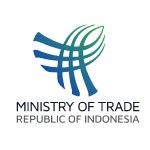Introduction
Copper is one of the superior trade commodities which is fully supported by domestic industrial sectors and the government. This aid for copper comes from both the mining sector and as well as other process sector with the help of medium-scale and large-scale industries.
Recognized as the second most saleable metal after silver, Copper finds its use in several sectors worldwide because of its excellent conduction properties.

The Export Performance
Mining and processing of Copper in Indonesia continues to hold a greater importance on the global scale despite competition from other metals such as coal, nickel, gold, tin and bauxite.
This specialized metal is very suitable due its ability to be a conductor of electricity and heat. The production of Indonesian copper in 2020 only reached 180.204 tons while the national target production was at 291.000. Indonesia’s industry and economy during the pandemic time was due to the ongoing global movements, one of which is related to the mining sector in mid-2019 where copper prices fell because of the trade war between the United States and China.
Despite the drop, the Covid-unlock phase has boosted production and sales and the numbers are once again rising like the good old days. By focusing on other countries around the world, the shift to global trade has been as a positive one.

The Market Review
Indonesia has copper metal resources of 4.925 million tons and 4.161 million tons in reserves. Copper is the third most used metal in the world, after iron and aluminum. Although Indonesia’s copper production is significant, Indonesia was behind Japan, India, Korea and Bulgaria as copper metal producers.
Yet unlike Indonesia, these countries do not have raw materials from mine field. Indonesia is not even a part of the copper smelter capacity growth in Asia. But in the last 20 years, Asia has increased the share of copper metal production from 10% to 60%. The copper stockpiles had increased due to increasing smelters were being built.
However, the spread of electric vehicles, semiconductors and non-renewable energy in the future which use high volumes of copper is expected to lift demand. It is predicted in 2023 will reach 25 million tons. The increase demand for copper in the future is an opportunity to encourage the construction of smelters. Another impact by building smelters is labors absorption and increase production capacity.




